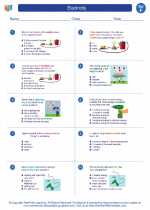Shrubs: An Introduction
Shrubs are woody plants that are smaller than trees and have multiple stems. They are an important component of many ecosystems and can be found in various habitats, including forests, grasslands, and deserts. Shrubs play a crucial role in providing food and shelter for wildlife, preventing soil erosion, and contributing to the overall biodiversity of an area.
Key Characteristics of Shrubs
Shrubs can be identified by several key characteristics:
- Multistemmed: Unlike trees, which typically have a single main trunk, shrubs have multiple stems arising from the base.
- Height: Shrubs are generally shorter than trees, with most species reaching a maximum height of 15-20 feet.
- Woody Stems: The stems of shrubs are woody, providing structural support and allowing the plant to persist year after year.
- Branching Pattern: Shrubs often have a dense branching pattern, creating a bushy or compact appearance.
Types of Shrubs
Shrubs can be broadly categorized into two main groups: deciduous shrubs and evergreen shrubs.
Deciduous Shrubs
Deciduous shrubs shed their leaves annually, typically in the fall. They often provide beautiful displays of color in the autumn before their leaves drop.
Evergreen Shrubs
Evergreen shrubs retain their leaves throughout the year, providing greenery and structure to landscapes even in the winter months.
Study Guide: Understanding Shrubs
Here are some key points to remember when studying shrubs:
- What are the main characteristics of shrubs that distinguish them from trees?
- Explain the ecological importance of shrubs in various habitats.
- Provide examples of deciduous and evergreen shrubs and describe their unique features.
- Discuss the role of shrubs in providing food and shelter for wildlife.
- Examine the benefits of using shrubs in landscaping and gardening.
By understanding the characteristics and ecological significance of shrubs, we can appreciate their importance in natural ecosystems and human-designed landscapes.
[Shrubs] Related Worksheets and Study Guides:
.◂Science Worksheets and Study Guides Sixth Grade. Electricity

 Activity Lesson
Activity Lesson
 Worksheet/Answer key
Worksheet/Answer key
 Worksheet/Answer key
Worksheet/Answer key
 Worksheet/Answer key
Worksheet/Answer key
 Worksheet/Answer key
Worksheet/Answer key
 Vocabulary/Answer key
Vocabulary/Answer key
 Vocabulary/Answer key
Vocabulary/Answer key
